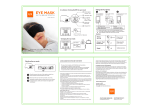
9
Contents
Extended functions
.......................................................... 37
Using Basic modes ..................................................... 38
Using the Smart Auto mode ........................................ 38
Using the Program mode ............................................ 39
Using the Smart Movie mode ...................................... 40
Using the Movie mode ................................................ 41
Using the Scene mode ............................................... 42
Using the Live Panorama mode ................................... 43
Using Scene modes .................................................... 45
Using the Picture in Picture mode ................................ 45
Using the Self Shot mode ........................................... 46
Using the Children mode ............................................ 48
Using the Jump Shot mode ........................................ 48
Using the Beauty Shot mode ....................................... 50
Using the Intelligent Portrait mode ................................ 51
Using the Night Shot mode ......................................... 51
Using the Close-up Shot mode ................................... 52
Using Magic modes .................................................... 53
Using the Magic Frame mode ..................................... 53
Using the Funny Face mode ....................................... 54
Using the Photo Filter mode ....................................... 55
Using the Movie Filter mode ....................................... 56
Using the Split Shot mode .......................................... 57
Using the Artistic Brush mode ..................................... 58
Using the Motion Photo mode ..................................... 59
Basic functions
................................................................. 13
Unpacking ................................................................... 14
Camera layout ............................................................. 15
Inserting the battery and memory card ....................... 17
Charging the battery and turning on your camera ...... 18
Charging the battery ................................................... 18
Turning on your camera .............................................. 18
Performing the initial setup ......................................... 19
Learning icons ............................................................. 21
Using the Home screen ............................................... 22
Accessing the Home screen ....................................... 22
Icons on the Home screen .......................................... 23
Setting Wallpaper ....................................................... 25
Selecting options or menus ........................................ 26
Setting the display and sound .................................... 28
Setting the display type ............................................... 28
Setting the sound ....................................................... 29
Capturing photos ......................................................... 30
Turning on the front display .......................................... 31
Zooming .................................................................... 31
Reducing camera shake (OIS) ..................................... 33
Tips for getting a clearer photo ................................... 35






















